Worldviews
Develop an understanding of the diversity of worldviews within First Nations, Métis and Inuit cultural and linguistic groups in Alberta.
To begin, select a category from the menu.
This Beginning Together activity introduces the concept of protocol—an important and necessary step in beginning to understand the diversity of First Nations, Métis and Inuit worldviews.
Preparing for the fall school term,
Terry begins his journey.
Having taught Grade 5 for several years, Terry is looking for new ways to engage all students in the wetlands unit and to begin weaving First Nations, Métis and Inuit perspectives into lessons. Guest presenters in the past have increased student engagement, so this year Terry decides to ask a First Nations, Métis or Inuit Elder to come into the classroom to present traditional knowledge about the local wetlands. The problem is, Terry doesn't know how to find an Elder who would be interested in coming to the classroom.
Classified Ad

Terry decides to put an advertisement in the local newspaper or on a classified ads website asking for a local Elder to visit the class.
The ad goes up right away. After a few days Terry gets a call from a young woman. She is very polite when she says that this method of requesting the wisdom of an Elder is not appropriate in traditional cultures.
Business Card
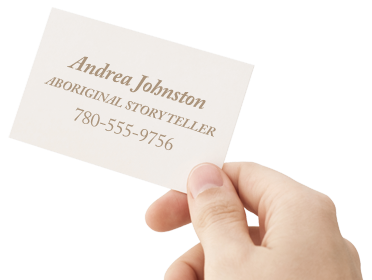
Terry calls the number on the business card. The person who answers explains that she is an accomplished Aboriginal storyteller but not an Elder. Terry is a little confused about the difference and asks about it. She suggests meeting for tea to talk in more detail.
First Nations, Métis and Inuit Consultant
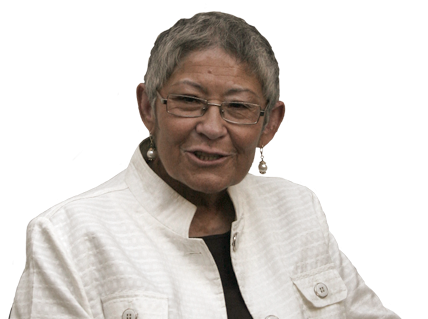
Terry calls the district’s First Nations, Métis and Inuit consultant, explaining the desire to have an Elder from the local community come to the school to talk to the Grade 5 Science class about wetlands.
The consultant talks in general about the protocol that should be followed. The consultant suggests Terry meet with an Aboriginal liaison worker in the area who has strong ties to the local community.
Native Friendship Centre

Terry contacts the nearest Native Friendship Centre. The Friendship Centre representative explains that there is protocol to follow and invites Terry to a face-to-face meeting, which Terry attends. During the meeting, the worker suggests four ways Terry can connect with the local Aboriginal community.
Apologize and end the call

Terry is disappointed because there's still no one to come speak to the class. At first Terry thinks that it is too difficult to contact an Elder and thinks about going to the library and looking for a book or video. Deep down, Terry knows that having the students connect with someone in the community is important. A book or video is not a substitute for meeting someone and hearing their perspectives. Terry decides to try again.
Apologize and ask for an explanation

Terry explains the plan to have an Elder speak to the Grade 5 Science class about wetlands. Terry asks the young woman about her background. She explains that she is a Cree artist. She understands Terry’s lack of experience in contacting an appropriate Elder and suggests a face-to-face meeting for tea to talk some more. Terry agrees.
Terry has tea with her the next day and learns more about protocol and later invites her to class to do an art project. She accepts the invitation.
Terry would still like an Elder to share a First Nation, Métis and Inuit perspective on wetlands. The Cree artist explains the importance of having someone “broker” or facilitate an introductory first meeting with an Elder. Now that she has met Terry, she offers to provide an introduction to a local Elder who is knowledgeable about wetlands.
Thank her and end the call

Terry thanks her for her time and ends the call. Unfortunately, Terry missed out on an opportunity. This invitation to tea was an important opportunity because meeting face-to-face is a vital part of building a relationship in Aboriginal culture and communities. Terry still doesn't have an Elder to come speak to the class about wetlands.
At first Terry thinks that it is too difficult to contact an Elder and thinks about going to the library and looking for a book or video. Deep down, Terry knows that having the students connect with someone in the community is important. A book or video is not a substitute for meeting someone and hearing their perspectives.
Terry decides to try again.
Terry agrees to meet her for tea

Terry agrees to meet the next day for tea. The storyteller explains the importance of face-to-face meeting and building a relationship in Aboriginal culture and communities. Terry asks if she could come talk about local First Nations, Métis or Inuit communities. She explains that although she is an accomplished storyteller, she is Mohawk and is only able to speak on behalf of her own culture and beliefs, not those of First Nation, Métis and Inuit communities in Alberta.
Terry has an idea and invites her to class to share a story and talk about traditional territories or oral tradition from her Mohawk perspective. She is comfortable with this.
Terry asks her if she has contact information for a local Elder. The storyteller explains the importance of having someone “broker” or facilitate an introductory first meeting. Now that she’s met Terry, she volunteers to provide an introduction to a local Elder, who may help locate an Elder who has knowledge about local wetlands.
Terry meets with the First Nations, Métis and Inuit consultant

Terry goes to the meeting with the First Nations, Métis and Inuit consultant and explains the desire to invite an Elder to speak to the Grade 5 Science class about wetlands.
The First Nations, Métis and Inuit consultant explains the importance of having someone "broker" or facilitate an introductory first meeting. She also explains that face-to-face meetings are very important to building relationships in Aboriginal culture and communities. She can think of an Elder who might be able to talk to Terry’s class about wetlands. She offers to set up a meeting.
Terry meets with the colleague
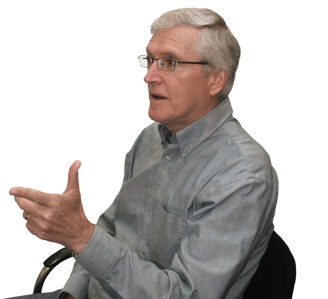
Terry goes to the meeting with the colleague and explains the desire to invite an Elder to speak to the Grade 5 Science class about wetlands.
Terry’s colleague explains the importance of having someone "broker" or facilitate an introductory first meeting. He also explains that face-to-face meetings are very important to building relationships in Aboriginal culture and communities. He can think of an Elder who might be willing to talk to Terry’s class about wetlands. He offers to set up a meeting.
Terry meets with the Aboriginal liaison worker
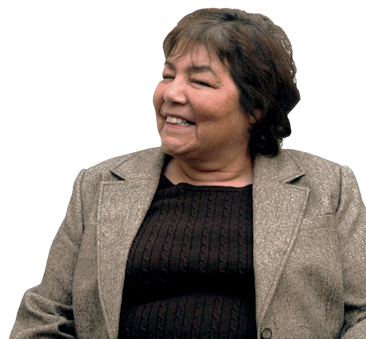
Terry goes to the meeting with the Aboriginal liaison worker and explains the desire to invite an Elder to speak to the Grade 5 Science class about wetlands.
The liaison worker explains the importance of having someone "broker" or facilitate an introductory first meeting. She also explains that face-to-face meetings are very important to building relationships in Aboriginal culture and communities. She can think of an Elder who might be willing and able to talk to Terry’s class about wetlands. She offers to set up a meeting.
Terry agrees to meet with an Elder

Terry is excited that things are moving forward and interested to learn more about protocol.
A week later, Terry is ready to meet with the Elder.
Terry meets with the Elder
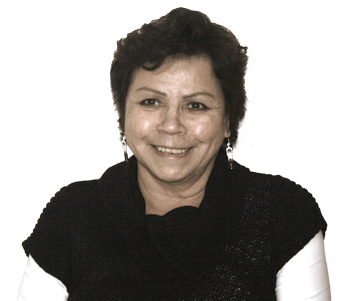
Terry is introduced to the Elder and thanks the Elder for agreeing to meet. Terry presents the appropriate gift. Over tea Terry visits with the Elder and when asked, explains what the class will be learning about in the wetlands unit and how the Elder might contribute.
The meeting goes very well and the Elder agrees to come to Terry's classroom to share their personal First Nations, Métis and Inuit perspective of the local wetlands with the students.
Good work!
Reflection Statement
Understanding and following appropriate cultural protocols is an important first step in building meaningful and respectful relationships with First Nations, Métis and Inuit. First Nation, Métis and Inuit protocols are rooted in traditional cultural practices and often involve the presentation of an Elder’s gift or offering. The Elder’s acceptance implies an agreement to proceed with the request or dialogue. An understanding of protocols opens a window to the diversity of customs within First Nation, Métis and Inuit worldviews and cultural practices. Understanding First Nation, Métis and Inuit worldviews will strengthen your connection to your students, their families and their home communities.
How could an understanding of cultural protocols and worldviews impact your teaching practice?
Audrey Weasel Traveller explains how protocols, or rules of etiquette, are integral to establishing relationships.
The speakers in these interviews transmit the diverse and authentic perspectives of First Nations, Métis and Inuit worldviews, histories and protocols.
Select a video.
Jerry Wood | Plains Cree | Saddle Lake Cree Nation | Urban Elder
Cree Elder Jerry Wood, Saddle Lake First Nation, explains how Indigenous cultures evolve. Although there are differences among First Nations, Métis and Inuit cultures, similarities exist, especially in spiritual beliefs. Jerry passed in 2016. We are privileged and honoured to still have his words to share.
Audrey Weasel Traveller | Piikani | Piikani Nation
Audrey Weasel Traveller, Piikani Nation, part of the Blackfoot Confederacy, explains how protocols, or rules of etiquette, are integral to respectful relationships with Elders and within First Nations, Métis and Inuit communities.
Angela Jones | Stoney | Alexis Nakota Sioux First Nation
Stoney Angela Jones shares experiences about her ancestors that are significant to her identity.
Marge Friedel | Métis Nation of Alberta Region 4 | Urban Elder
Métis Elder Marge Friedel, from the Lac Ste. Anne area, speaks about the importance of respecting different worldviews.
Connie Crop Eared Wolf | Siksika | Blood Tribe
Connie Crop Eared Wolf of the Kainai First Nation explains the importance of respecting the differences among the cultural groups that make up the Blackfoot Confederacy.
Francis Dumais | Métis | Métis Nation of Alberta Region 2
Francis Dumais, Métis Elder, talks about protocols for approaching an Elder.
Our Words, Our Ways
Several Elders from several First Nations are discussing worldviews at a professional development session on Our Words, Our Ways, an Alberta Education publication for teachers of First Nations, Métis and Inuit students. The Edmonton Regional Learning Consortium session was held in December 2009.
Select a resource type from the list.
Web Links
While some First Nations, Métis and Inuit experts have recommended these web links, they are not authorized by Alberta Education.
Alberta Native Friendship Centres Association
Alberta Native Friendship Centres Association is dedicated to providing culturally based programs and services to respond to the distinct needs of Aboriginal People in their communities and to bridge the gaps that occur between urban Aboriginal and non-Aboriginal Peoples.
Four Directions Teachings
Four Directions Teachings is a visually stunning resource for learning about Indigenous knowledge from five First Nations in Canada, including Cree and Blackfoot. Elders and traditional teachers narrate animated visuals.
Aboriginal Affairs and Northern Development Canada
Aboriginal Affairs and Northern Development Canada (AANDC) is one of several federal departments responsible for meeting government obligations and commitments to First Nations, Métis and Inuit and for fulfilling constitutional responsibilities in the North. AANDC’s responsibilities are largely determined by numerous statutes, negotiated agreements and legal decisions.
Our Words, Our Ways: Teaching First Nations, Métis and Inuit Learners. Alberta Education
In this comprehensive resource, teachers are introduced to First Nation, Métis and Inuit worldviews and cultures. Specific strategies guide teachers in these areas: working with Elders and the community and making learning meaningful, as well as teaching and assessing First Nation, Métis and Inuit students. Stories of shared wisdom from Elders provide an Indigenous perspective. Appendices provide maps, guidelines for talking circles, guidelines for evaluation of resources and a list of First Nation, Métis and Inuit organizations and agencies.
Education Is Our Buffalo: A Teachers’ Resource for First Nations, Métis and Inuit Education in Alberta. Alberta Teachers’ Association
“Education is our buffalo” is a phrase sometimes used to indicate the significance of education in some First Nation and Métis communities. This resource provides an overview of some First Nations, Métis and Inuit in Alberta, their histories, cultural traditions and teachings. A review of First Nations, Métis and Inuit education in Alberta includes statistics, misconceptions and recent developments.
Montana’s Indian Education for All: Applying Multicultural Education Theory. Jioanna Carjuzzaa and others
The Indian Education for All Act (IEFA) incorporates the teaching of American Indian cultures and histories into Montana’s statutory definition of quality education. The authors discuss the implementation of this statute, which provides a template for changing public education. IEFA is a practical example of multicultural education, of turning away from a culturally homogenized curriculum to one that includes multiple perspectives.
Documents
While some First Nations, Métis and Inuit experts have recommended these documents, they are not authorized by Alberta Education.
Protocols. Aboriginal Perspectives Teacher Resource
This excerpt from Aboriginal Perspectives Teacher Resource (Aboriginal Studies 10) provides a guide for meeting with an Elder. It includes information on respecting protocols, visiting First Nation, Métis or Inuit communities and hosting Elders in the classroom.
Compassionate Mind: Implications of a Text Written by Elder Louis Sunchild. Walter Lightning
Walter Lightning, assisted by other Elders, reflects on “Compassionate Mind,” a text by the late Elder Louis Sunchild. The text is presented in Cree, Cree syllabics and English. “Compassionate Mind” focuses on the nature of our minds and our potential to express compassion in all our behaviours and attitudes. Walter Lightning’s reflections present fundamental knowledge on philosophy and pedagogy. He discusses the relationship between Elders and listeners, the use of metaphor in stories, and the importance of protocol.
Worldview. Aboriginal Perspectives
For many Indigenous peoples, worldview is rooted in spiritual beliefs. This excerpt from Aboriginal Perspectives (Aboriginal Studies 10) explores First Nations, Métis and Inuit worldviews and their relationships to spirituality and religion.
Aboriginal Peoples in Canada. Aboriginal Perspectives
This excerpt from Aboriginal Perspectives (Aboriginal Studies 10) discussd the diversity of First Nation, Métis and Inuit cultural groups and the issue of self-identity.
First Nations and Métis Peoples in Alberta. Aboriginal Perspectives
Understanding the diversity of First Nation, Métis and Inuit cultural groups is a place to start. This excerpt from Aboriginal Perspectives (Aboriginal Studies 10) provides an overview of the history of major cultural groups and languages, and a map and guide to First Nations reserves and Métis Settlements.
The Métis People. Peoples and Cultural Change
Métis is an old French term that means mixed. Métis culture is distinct––neither First Nations nor European, but with elements of both. This excerpt from Peoples and Cultural Change (Aboriginal Studies 20) explores the many definitions of the word Métis and provides an overview of Métis history.
Jagged Worldviews Colliding
In this essay Dr. Leroy Little Bear describes the situation that exists between the Aboriginal, specifically Plains Indian, worldview and the dominant Eurocentric worldview. Dr. Little Bear outlines reasons that have led to the collision between these two worldviews.
Select a video from the list.
A Cree Perspective on Worldviews
Sidney Fiddler is a Cree member of the Waterhen Lake First Nation in Saskatchewan. For over 30 years he has been active in Aboriginal community development and education. His interests, experience and academic specialties include Cree traditional and cultural ways, residential school issues and First Nations research and politics. Sidney Fiddler is a pipe carrier and sweat lodge leader of the Plains Cree tradition.
Two Worldviews as told by Randy Risto
This story is a different take on the classic tale of the tortoise and the hare. In this version, we see how our worldview is not shared by everyone else, leaving us to wonder if we are tortoises or hares.
Identity
Four community Elders work with students to consider questions such as: Who am I? Where do I come from? And what does it mean to be an Aboriginal person in the 21st century? This journey across Alberta to Blackfoot, Dene, Métis, Cree and urban communities explores how the traditional values of First Nations, Métis and Inuit can be transferred to life today.
Bearpaw Media Productions, a division of Native Counselling Services of Alberta, produced this video in 2005 with funding from the Alberta Law Foundation.
Tobacco Gifting Protocol
Gerald Auger, an oskapew (Elder’s helper) in the Wabasca-Desmarais community, discusses the protocol of gifting tobacco in the seeking assistance from Elders and Knowledge Keepers. Copyright permission from Micheal Auger, MDM.
